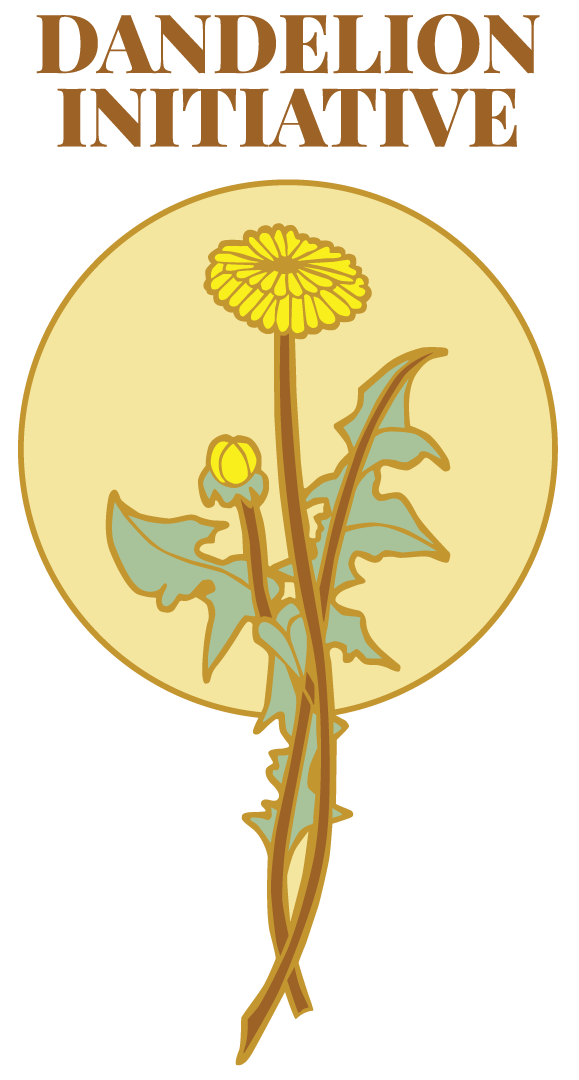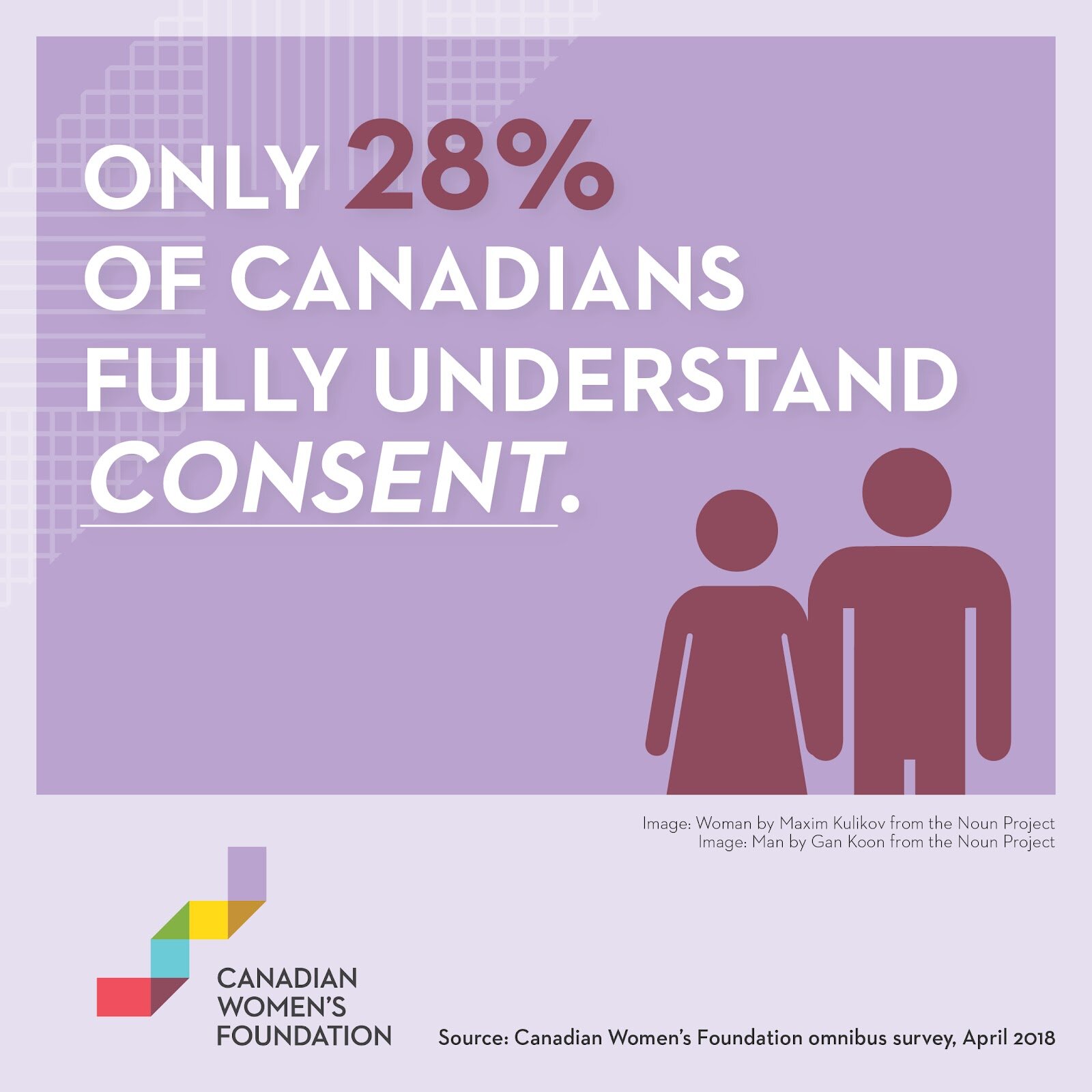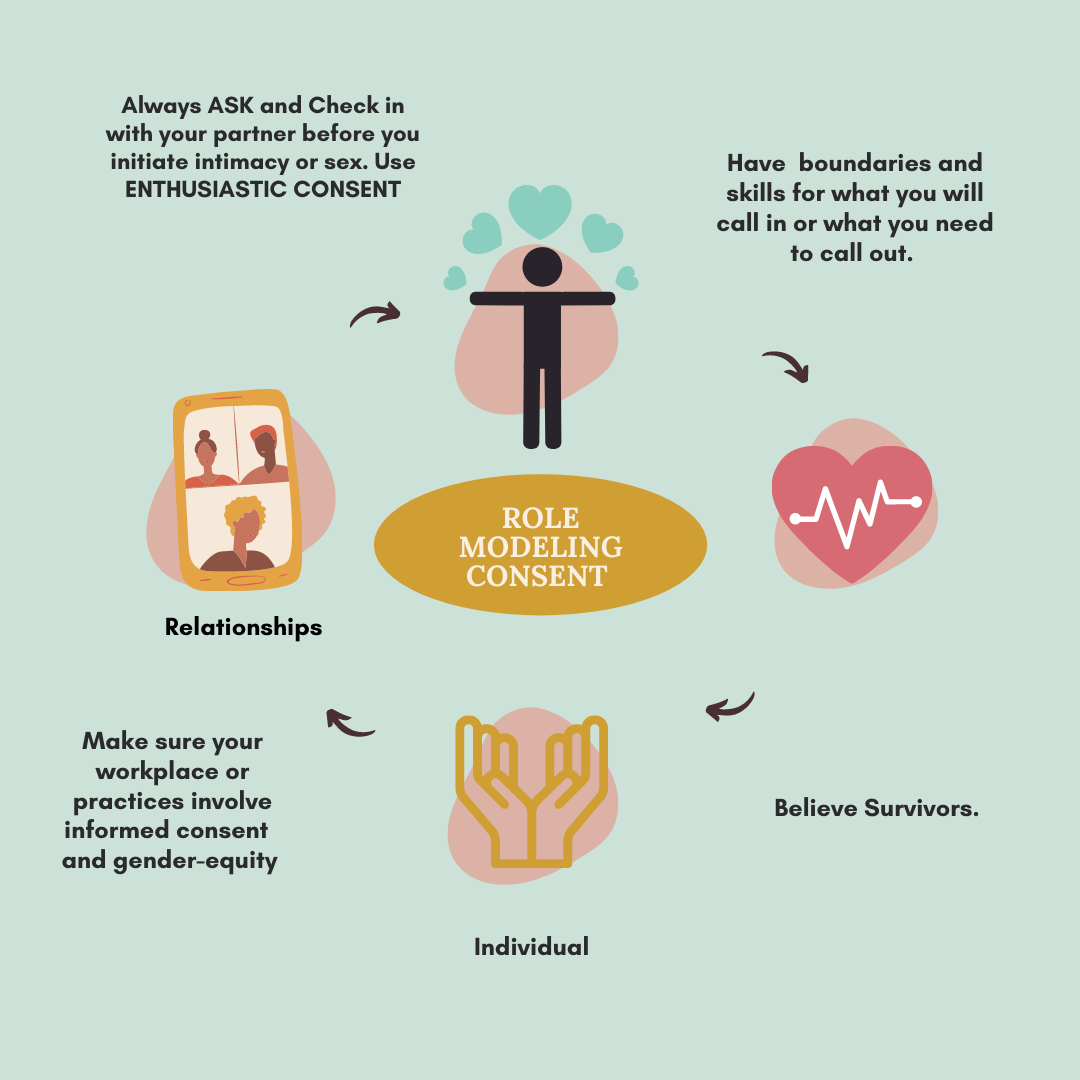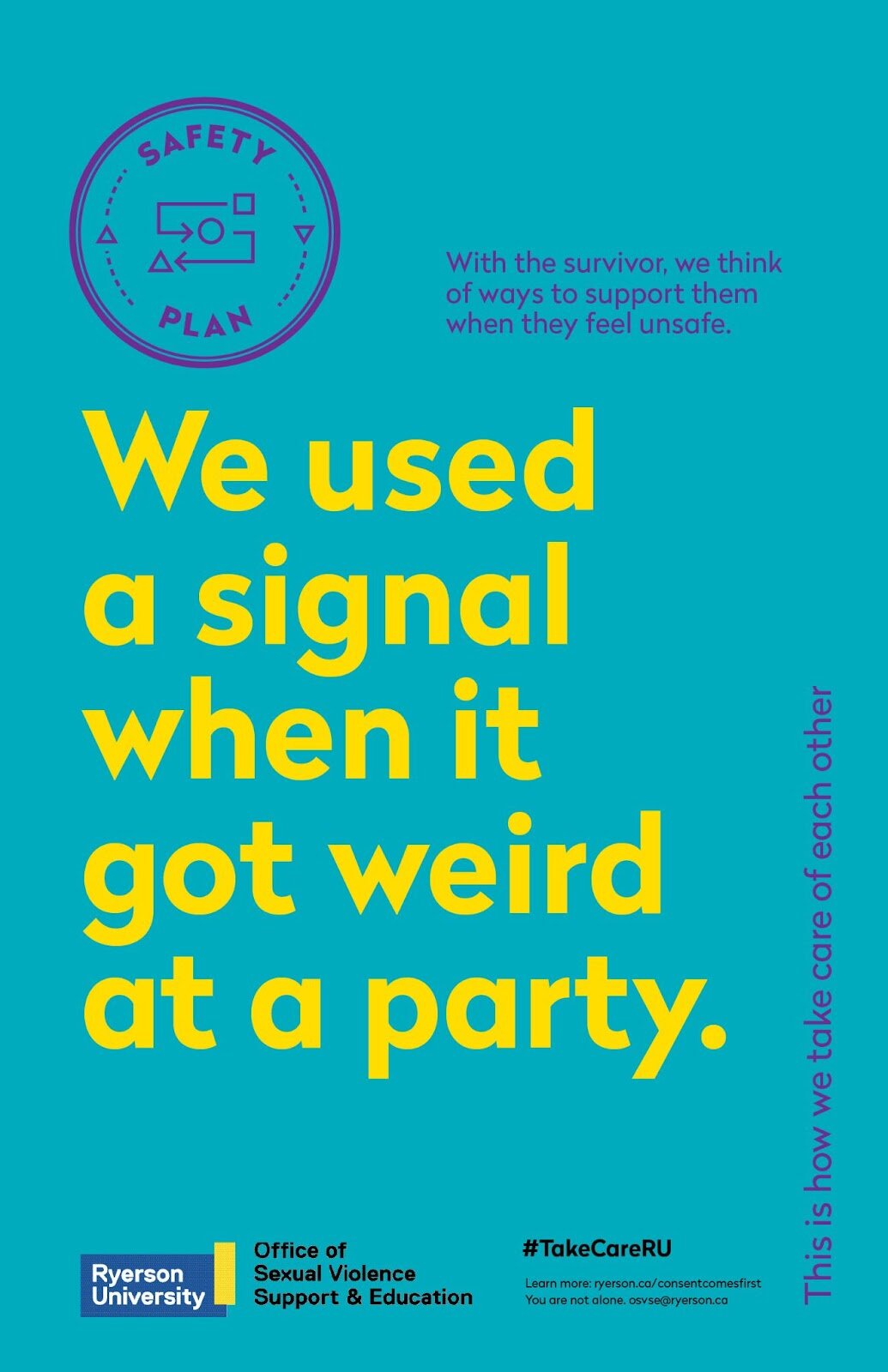
Empowered Bystander Intervention
EBI Learning Objectives
Once you complete the learning and exploration activities throughout this section, you will find that you can:
- Define what an empowered bystander can do
- Explain what diffusion of responsibility is and why it happens
- Explain the benefits of the empowered bystander approach
- Identify your strengths and boundaries around intervention
- Identify Gender-based violence or harassment and know when to intervene safely
- Name at least one or two examples that you have seen in videos or websites on empowered bystander intervention in GBV
- Explain what consent is
- What reinforces rape culture?
- Talk to your family and friends about gender equity and safety
- Identify how you consume media that may or may not perpetuate rape myths or sexism
- Redefine masculinity and challenge gender norms
- Talk about privilege and power
- Use at least one intervention tool
- Use a combination of intervention tools inside of your workplace and outside of your workplace
- Understand how to intervene in survivor-centric ways that empower the victim/survivor
Introduction to EBI
What is worse than being harassed?
Being harassed in front of people who do nothing to help you.
“He just kept leering at me and at my body, he kept sitting super close to me and even touched my hair twice, everyone at the staff party noticed but no one did anything because he’s the boss. It was horrible so I just left and quit a week later. I knew it would only escalate.”
What is a bystander or bystander intervention?
Bystanders are:
individuals who observe violence or witness the conditions that perpetuate violence. They are not directly involved but have the choice to intervene, speak up, or do something about it.
The New York State Department of Health’s “Stop Sexual Violence: A bystander intervention toolkit” describes bystander intervention in a way we really love:
Bystander intervention is the act of feeling empowered and equipped with the knowledge and skills to effectively assist in the prevention of sexual violence.
Bystander intervention doesn’t have to jeopardize the safety of the bystander.
Bystander intervention and bystander education programs teach potential witnesses safe and positive ways that they can act to prevent or intervene when there is a risk of sexual violence. This approach gives community members specific roles that they can use in preventing sexual violence, including naming and stopping situations that could lead to sexual violence before it happens, stepping in during an incident, and speaking out against ideas and behaviours that support sexual violence.
It also gives individuals the skills to be effective and supportive allies to survivors after an assault has taken place.
In the field of public health, primary prevention refers to intervention before anyone has been harmed. The bystander intervention approach is key to finding and expanding the possibilities to stop sexual violence BEFORE it is perpetrated.
Did you know?
We all carry the capacity to intervene and speak out before violence happens, most important we can all provide survivors with acknowledgement and empowerment.
“I believe you.” Please visit our disclosure best practices page here if you would like to explore our disclosure and support script
When an ally learns how to see the roots and rot of sexism, racism and gender inequity they begin to apply their allyship into action. These actions make you an active/empowered bystander.
This does not mean you “save” people or women from harm, it means you empower those with less perceived power through your actions and the space you create for that survivor. It means you call out and call in rape culture and gender-based violence. It means you understand that it is not the individual alone who is responsible for their safety but our responsibility as neighbours and community members as well.
Tip:
Read this great article:
How to Be an Active Bystander When You See Casual Racism
The Empowered Bystander Approach offers several clear benefits:
- Discourages victim-blaming and supports survivors with informed consent
- Prevents violence from escalating or continuing, changes behaviours or stops them
- Offers the chance to change social norms, re-directing people, calling them in and holding them accountable
- Shifts responsibility from victims to the community, which is a core need. Community care means to seek and hold accountability to anyone who is perpetrating rape culture or misogyny.
Why don’t more people intervene?
- They lean on the idea of a “Diffusion of Responsibility” which is an archaic way of thinking that someone else will help if you don’t and if they don’t someone else will and if they don’t… and on and on. Read We Are All Responsible: How #MeToo Rejects the Bystander Effect to learn more.
- They are unsure what to say or do and don’t want to escalate the situation or get hurt themselves.
- They may not have the privilege of safety in a situation. If you are a person who identifies as a survivor or a person who has intersections that create barriers to access, safety and justice please remember to delegate to another active bystander who may have more safety and privilege in the situation.
What Is the Bystander Effect?
Watch this video to learn about the Bystander Effect.
Now, watch this video, a staff favourite and a great introduction to various forms of empowered/Active bystander intervention!
Finally, check out the video below to learn more about being an Empowered/Active Bystander.
Tip:
Remember that Bystanders are more likely to “engage in prosocial behaviour” or helping behaviour when they are aware that there is a problem and they see themselves as a responsible party in solving the problem. This theory is demonstrated by the situational model, developed by Latane and Darley (1970), which is the most commonly used bystander intervention model.
The social-ecological framework
Empowered bystanders thrive when systems, workplaces, communities and cultures reinforce consent and challenge rape culture. Individuals are shaped by not only their actions but the reactions of their relationships, community and society.
Check out this image to better understand the social-ecological model.
Big Reflection Questions:
Can you identify different ways sexual harassment and gender-based violence can look or sound?
Do you see yourself as part of the solution to stopping sexual harassment or gender-based violence?
Tip:
Visit the GBV 101 and Rape Culture section of the portal to explore some more learning if you are having a hard time answering these reflection questions.
Activity #1
Try the EBI Reflection Activity now before moving onto the next learning section.
Consent 101
In 2018, we used this image and asked our participants: how many of you attended a school where they taught you “sexual health” education that came from sources like this?
We then asked, “if you attended public or private schools, how many people received sexual health education? Did anything you learn help you enact consent or understand what consent means?”
Not surprisingly, a majority of people either received no sexual health or consent education. Or they received sexual health education that was:
Rooted in toxic gender-norms
Not LGBTQ inclusive
Abstinence based
Shaming
What is consent?
According to Planned Parenthood, consent is defined as “when a person freely agrees to do something.” Sexual consent is when a person agrees to engage in sexual activity with their partner.
“F.R.I.E.S” may help you remember what consent looks and sounds like: freely given, reversible, informed, enthusiastic, and specific.
Consent is important at work
Example: Hey Sara, good to see you! Do you want a hug or a high five?
Consent is important in relationships:
Example: Lou, I’m noticing _______________, I’m gonna stop and check in with you. Do you want me to keep going or change what I am doing?
Reflection
Watch this video, what do you think?
Why don’t we understand consent?
Many people have been taught beliefs and practices around sexual activity or relationship dynamics that are rooted in misogyny and heteronormative norms.
Many have beliefs and cultures of community or practice that teach dominance, control and ownership instead of consent. This is a truth of the past and it does not have to be the truth of our collective futures.
Many people do not believe that women and feminized people deserve the same autonomy, rights and respect that cis men experience.
Every person has the capacity to harm and be harmed and therefore every individual has the capacity to act with consent.
Sarah Barmak expresses this with profound insights, writing, “the notion that sex will always be fraught with ambiguity makes it more difficult for us to understand that sexual experiences that take place under pressure or duress are a form of assault. This is the type of sexual assault at the highest risk of being normalized—dismissed as “just a part of life”—and the type that rarely makes it to court.”
Reflection Challenge
Why would there be ambiguity around sex and consent? Who or what reinforces this idea of ambiguity? Dive deeper with this reading:
The Problem With Consent in Movies | Opinions
Illegal Or Just Creepy? The Complicated History of Age of Consent
Consent 101: What It Looks Like, What It Sounds Like, How to Give It, and How to Get It
Wait, how do I make sure I am acting with consent?
The answer is simple, ask first, wait for a response, if the response is an enthusiastic yes then consent is present.
If the answer is no, or not now, or maybe, or I am not sure, then that is a NO.
Communication is key! Read this amazing piece entitled: Why Do People Hate the Concept of Enthusiastic Consent?
Tip:
Watch this great and super helpful video!
How do I role model consent?
Privilege – check it. Get in tune and recognize your privilege in a situation, when you can dismantle toxic power dynamics you can create cultures of consent for you and other people who may have less assumed power than you.
Enact - Enact consent in your personal life through enthusiastic consent practices and accountability
Institute- informed consent practices, survivor-centric practices in your workplace, school, group or community
Encourage survivors and empower them through active allyship
Learn more and read more about healthy relationships and consent
Disseminate what you learn to people in your life
Challenge
Now that you have a better understanding of what consent is, it is time to practice what you have learned with this short, interstellar game. Adrift is an award winning game created by the incredible Quinn Crossley and Andrew Connell, Presented by Jennifer Ann’s Group.
Activity #2
Try the How to Talk to Family & Friends Activity now before moving onto the next learning section.
What is Consent Culture?
Kitty Stryker’s definition is one that we love, they say:
“Consent culture is a challenge to and push against rape culture. It centers itself around moving towards consent, rather than avoiding rape. I started working within the construct of consent culture because I wanted to help create something better, something that didn’t offer THE solution, but did signal boost many potential solutions as a way of transforming us as a society into doers rather than just observers.”
We believe that:
- Consent culture is rooted in active or enthusiastic and informed consent.
- It is a culture that normalizes unpacking power dynamics and hierarchies to ensure all people feel like their voices and selves are valued
- Consent culture normalizes asking for consent and respects everyone’s capacity and autonomy to say no or to choose what feels good or safe for them and what does not.
- It gives people affirmation through policies and practices that they have informed consent and are inclusive and survivor-centric
- It encourages setting boundaries and honoring those individual boundaries.
- It thrives on open and honest communication and a trauma-informed approach to conflict resolution.
- Consent culture centres survivors and their needs.
- Consent culture does not shy away from rape culture, it works to dismantle it and label it and prevent it.
Recommended Learning and Engaging
Asking for Consent takes courage - learn more from Karen B Chan, an incredible sex and consent educator and facilitator.
Check out this amazing and super informative Zine by Kyle “Guante” Tran Myhre.
Creating Consent Culture Quick Checklist
Are you normalizing asking for consent and being asked for consent?
Are you responding respectfully when consent is denied or boundaries are set?
Do you understand how power dynamics impact consent?
Do you believe survivors?
Are you going to call out violent or harmful behaviour? Are you going to call in your friends/family who may be perpetrating harm?
Do you have policies and practices at work that reinforce consent culture?
Can you access 1 or more experts, facilitators, educators or community leaders/organizations that can offer workshops, training and ongoing learning opportunities?
Can you name your privilege and use it to challenge gender inequity?
Do you have other options for survivors other than reporting to the police or the workplace manager?
Does your environment encourage consent or reinforce a culture of consent?
Recommended Learning
Visit the Workplace GBV section and Safer Spaces Toolkit to see examples and templates for tools and practices that will support a consent culture within the workplace or with groups and spaces.
Activity #3
Try the Privilege, Power & Gender-Equality Activity now before moving onto the next learning section.
Redefining Masculinity & Unpacking Gender-Norms
“All these norms that we see aren’t normal at all,” said Joe Talbot, the lead singer of the British band Idles. “It’s a giant lie.”
Maya Salam for the New York Times writes:
So what does “toxic masculinity,” or “traditional masculinity ideology,” mean?
Researchers have defined it, in part, as a set of behaviors and beliefs that include the following:
Suppressing emotions or masking distress
Maintaining an appearance of hardness
Violence as an indicator of power (think: “tough-guy” behavior)
In other words: Toxic masculinity is the product you can expect to see from teaching boys that they can’t express emotion openly; that they have to be “tough all the time”, that anything other than that makes them “feminine” or weak. (No, it doesn’t mean that all men are inherently toxic.)”
And it teaches that vulnerability and humility is weakness. This is a dangerous notion to teach and enact, it is clearly researched and documented that these teachings do foster violence and impact men in negative ways exposing them to long term mental health issues, incarceration and other losses of self and dignity.
Did you know?
Research from Darley and Latane has found that when a group of bystanders is mostly made up of men, there was a lesser chance of intervention. The study determined that the more men there were in a group, the lower the chance of intervention.
Jackson Katz, a popular public speaker and educator, in the second part of a three-part series on the bystander approach, says:
“It is important for people to learn and practice techniques they can use to intervene effectively in potential sexual assaults and a variety of other social situations. But more than skill-building is required. People – in this case especially, men – need permission from each other to act, and reassurance that those who do intervene and interrupt abusive behavior will be respected, not rejected, for actually “stepping up to the plate.”
There has to be a better way
There are amazing resources out there for children and parents to learn about consent and breaking gender norms. People of all genders can learn how to break archaic and harmful gender norms.
This is an offering and reflection, not the solution.
Try this with a friend, a group or by yourself.
Grab a favourite book, story, movie, event, show, etc.
How many women are portrayed in the show/movie?
How many women of colour are there?
Are the portrayals harmful or stereotypical?
If there are depictions of acts of harm or violence against women, what would you do if you witnessed that or knew of such harm being committed?
How does the show portray or talk about consent?
How do you talk about consent?
Are there any LGBTQ characters? How do you feel when they are intimate?
Add your own questions or reflections yourself.
Then, we strongly recommend and encourage you to read these resources:
Boys to Men: Teaching and Learning About Masculinity in an Age of Change (Published 2018)
Engaging Men and Boys in the Prevention of Gender-Based Violence
Toxic masculinity - Male protagonist Bingo
Redefining Manhood: How to Promote Healthy Masculinity Among Boys
Feminist Therapy For Men: A Road Towards Non-Toxic Masculinity
Empowered Bystander Intervention
Tools for Intervening
Welcome! You have made it this far and we are super proud of your hard work!
You have learned so much about gender-based violence, rape culture, misogyny, intersectionality and gender-equity and empowered bystander interventions. Now you can take that foundation of learning and apply it alongside some good bystander intervention actions!
Tip:
Remember, it’s not about perfection, it is about prevention. If you need to delegate that is as powerful as direct interventions.
Potential Script and Actions
Examples and Offerings
Distract
“Excuse me. Do you have the time?”
Drop something. Make a big sound. Draw attention from many people, don’t hurt yourself doing this.
Make direct eye contact with the person you are worried about and ask them if they can help you find something (i.e. ask for directions to a specific place, the closest coffee shop, etc.)
Use your body or umbrella to create a barrier between the harasser and the person being harassed.
Direct
"Hey, Stop that.”
“We do not do that here, that is not ok. Stop”
“I can see you doing that, stop right now.”
“I don’t want to hear that in this space.”
“That kind of behaviour is not welcome here.”
“Is everyone else hearing what I am hearing?”
“I can’t be the only one who thinks this is not OK.”
Delegate
Look for others to help.
Look for security/support.
Ask for help from other bystanders around "hey, are you seeing this? Can you please help?"
Use a secret code only you and your friends know to get more people to help you
Delay
Pretend to be old friends with the person you are worried about.
Interrupt and pretend to need the victim’s help. And, leave the situation with them. This is called “redirecting” the attention away from the victim/survivor.
Make a big sound: Draw attention to the situation you are witnessing if you can't get close.
Document
Write it down in detail – only describe what you see, not what you feel.
Photograph it/video tape it.
Keep all texts/photos/emails.
Make sure you check in with the survivor before posting or sharing any evidence or documentation.
Important: do you know what to say to someone?
Check out our disclosure script, or please remember to give acknowledgement and a check-in:
I am so sorry this happened, what do you need? How are you feeling? Can I help in any way?
Opportunities for Learning
Resources at Ryerson
We also really love this shareable:
Well done, you’ve reached the end of the Empowered Bystander Intervention section of the learning portal!
Remember to take breaks and practice self-care in between sections. This can be difficult content. If you need extra support or are feeling triggered, access the resources on the trigger warning page.


















